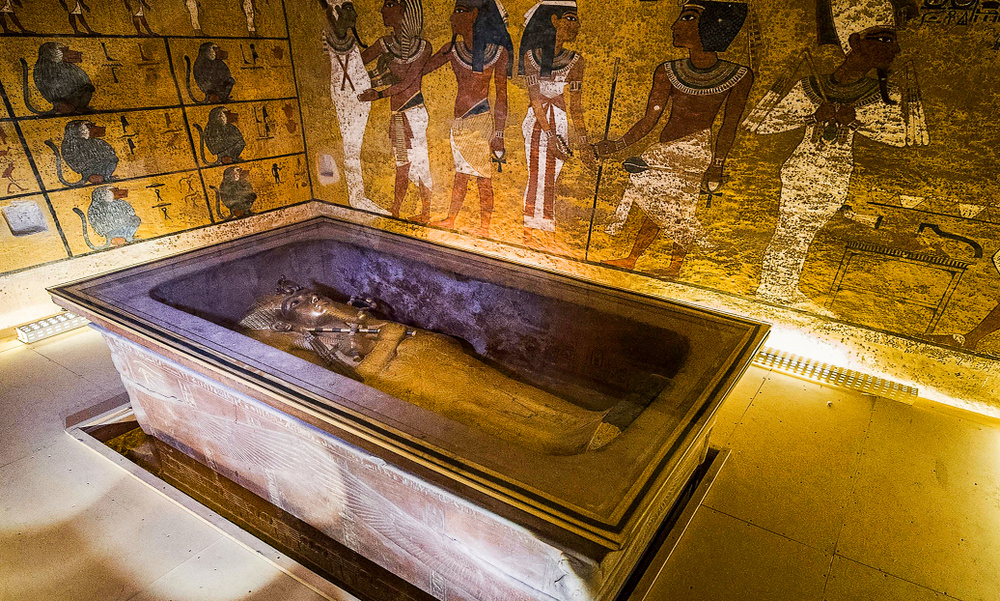Egyptian mummification: The key to eternal life
Egyptian mummification: The key to eternal life
Egyptian mummification: The key to eternal life
-
Hannah
-
Hannah

The Ancient Egyptians were so good at mummification that some mummies have endured to this day, and they tell us so much about the people of this land and time.
Experts believe that the practice of mummification began in around 2600 BC, during the Fourth and Fifth Dynasties, and continued through until the Roman Period, which ended in AD 364.
The best preserved mummies that have been found date to the Eighteenth to Twentieth Dynasties of the New Kingdom (1570–1075 BC). The process for the mummification at this time was carried out by special priests and it took 70 days:
- First, they would remove the internal organs, doing as little damage as possible to the body (these would be preserved in canopic jars and entombed with the mummy). They left only the heart in place, believing this to be integral to the person.
- The key to mummification was to remove all the moisture from the body so that it would not decay. The priests used a kind of salt to do this called natron. It took some time for the body to dry out.
- Once the body was dried, it was laid out with the arms crossed over the chest. Then a priest wearing an Anubis mask carefully wrapped it in strips of linen. Amulets and written spells from the Book of the Dead would be inserted between layers, and a mask of the face was placed between the head wrappings. Some mummies were then dressed in clothing.

Egyptian mummy
Once the mummification was finished, the ‘Opening of the Mouth’ ceremony was carried out. Using special instruments, a priest touched parts of the body to open them for the next life, and once the mouth was touched, it was believed that the person could once more talk and eat and drink. Then the mummy was lifted into the coffin, laid to rest in the tomb, and sealed up there.
Clearly, mummification was a long and involved process. So why bother? Quite simply, the people of Ancient Egypt believed that the body was where the soul dwelled; so if the body decomposed, the soul could be lost. Mummification was a way to ensure that the person had a life after death.
Probably the best-known mummy is that of Tutankhamen, and the mummies of many other pharaohs have been found too (recently, I wrote about the Pharaoh’s Golden Parade in Cairo, in which the mummies of eighteen ancient kings and four queens were transported to their new resting place, the National Museum of Egyptian Civilisation). The high and mighty of Egyptian society were also mummified, but because it was a lengthy and costly process, it was out of reach for most people. (Cheaper mummification practices did evolve, but they were often less successful at preserving the body.)

Tomb of Tutankhamen
It wasn’t only people who were mummified. Over a million animal mummies have been discovered in Egypt. The people saw animals as incarnations of gods, and so took great care to preserve their remains. Researchers at the University of Bristol even found that ‘the mummification techniques ancient Egyptians used on animals were often as elaborate as those they employed on the best-preserved human corpses’ (source: National Geographic).
Commonly mummified were cats (seen as the incarnation of Bastet), Apis bulls (the incarnation of Osiris) and ibises (the incarnation of Thoth). All kinds of other animal mummies have been found, from lizards and beetles to baboons and crocodiles. These animals would have been part of rituals that had great spiritual significance for people.
Of course, we know all of this about mummies because we have uncovered them and examined them. Though the human mummies entombed in Egypt were meant to remain undisturbed for eternity, many were disturbed by tomb robbers – and then Egyptologists. Shockingly, some were stripped of their jewellery and then used for other purposes. They were burned; their bandages were turned into paper; they were even ground into a powder called mumia that was supposed to be ingested to make one live longer.
Thankfully, today mummies are largely treated with the respect that they deserve, and we are still learning so much from them. Just last month the Journal of Archaeological Science featured the discovery of the first pregnant Egyptian mummy. According to Ancient Egyptian beliefs, that mother and her child live on in the afterlife. A beautiful thought.
Photo credits: 1) matrioshka/Shutterstock.com 2) Andrea Izzotti/Shutterstock.com; 3) Nick Brundle Photography/Shutterstock.com